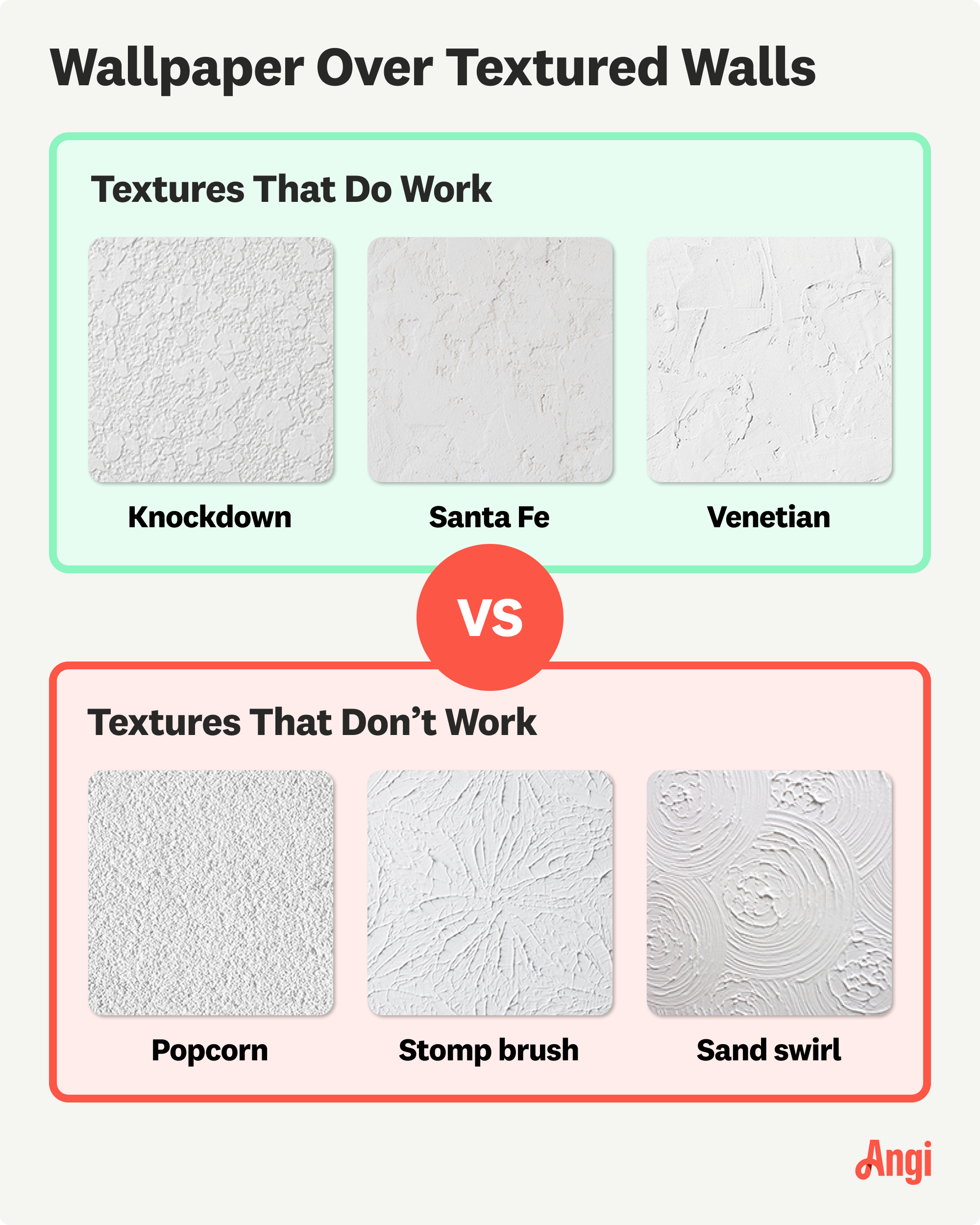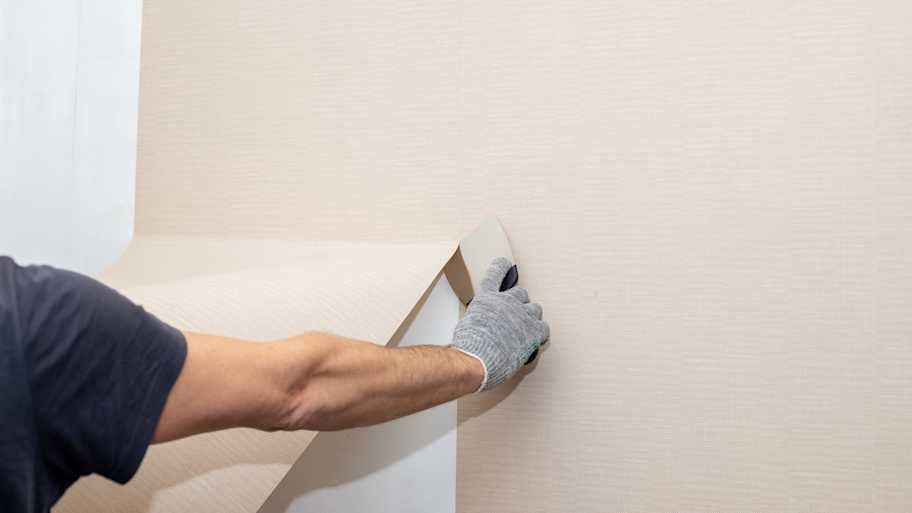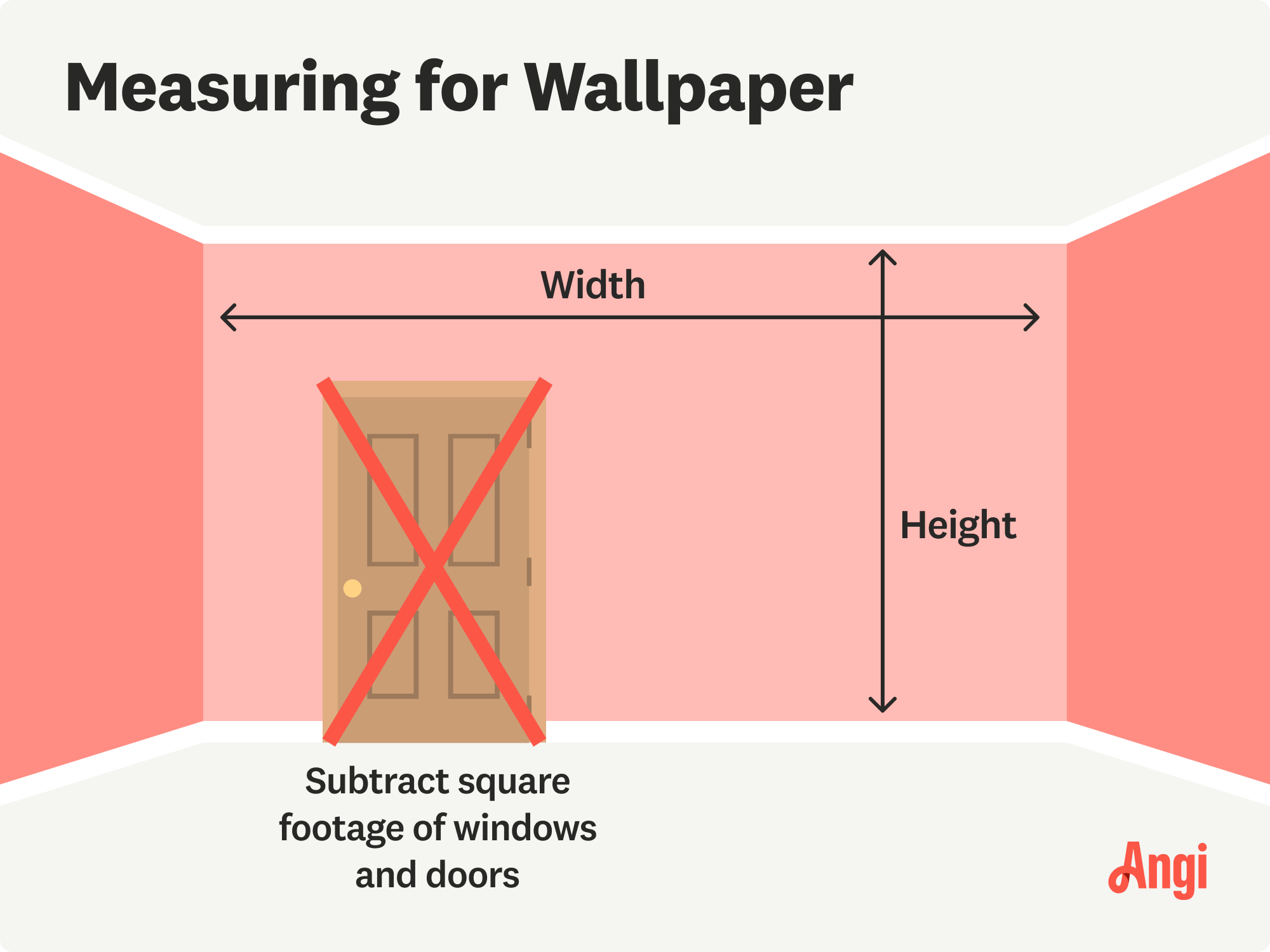
The cost to paint the interior of a house in Columbus, OH depends on size, layout, type of surface, and more. Learn what factors can influence your total in this guide.
Spoiler alert: Don’t overthink it


Peel-and-stick wallpaper offers an easy way to totally rejuvenate your interior—or at least, it’s supposed to be easy. But when faced with the daunting task of perfectly aligning a pattern, many decorators freeze. Fortunately, with these nine tips for peel-and-stick wallpaper applications (and just a little bit of planning), it really is as easy as peel, stick, and enjoy.

The first step to a great wallpaper experience has nothing to do with actually applying the wallpaper and everything to do with the wall itself.
After turning off the power and removing the outlet covers and light switch plates (which you’ll need to do to get the best coverage with your wallpaper anyway), clean and dust the walls with a soft, damp cloth. Then, give the walls a full 24 hours to dry. This step can also stop peel-and-stick wallpaper from damaging your walls.
Although it might seem like a good idea to start at a corner or edge, it’s often easier to line up your pattern if you start in the middle of your wall instead. It can also make it easier to keep your wallpaper straight as you go.
Here’s the caveat, though: That first panel you stick needs to be perfectly straight, which means it’s time to get out your level and a pencil. Before you peel and stick, you should place, level, and trace. Then, you can move forward with confidence. Consider using a laser level if you have access to one.

If it’s taking you half an hour to get your first wallpaper panel perfectly aligned, you may find yourself despairing about how long the entire project is going to take. But don’t worry: The first panel is supposed to take the longest, and investing enough time in this step can help make the rest of the project flow much more quickly.
If you peel off the entire backing of a panel of wallpaper at once, it’s a lot easier to accidentally stick the bottom somewhere it’s not supposed to go while you’re trying to work very delicately with the top of the sheet.
Instead, peel back 6 to 8 inches, begin sticking, and peel off the backing as you go. That way, you’ll be less likely to accidentally wind up with crooked paper. Many peel-and-stickers find their projects turn out best when they start at the top of the sheet rather than the bottom. And don't start right at the edge of the ceiling or crown molding.
Along with peeling off a little bit of backing at a time, you’ll want to slowly smooth down your wallpaper panel as you stick it, but beware of using anything too strong or forceful to do so.
Scraping down your wallpaper with a wooden rod or credit card could cause tears, exacerbate bubbles, or mess up the pattern. Instead, you can use a wide plastic tool designed for this purpose, or even just an extra roll of wallpaper. Once you get to the edge of your floor or molding, use a utility knife to cut off the excess.
It happens even to the most careful decorators: the dreaded bubble. Fortunately, you can safely pop small wallpaper bubbles without affecting the pattern in a way that will be noticeable. Use a utility knife, pin, sewing needle, or another very sharp edge to poke a tiny hole in the center of the bubble. Smooth it down and voila.
Once your wallpaper arrives, remove it from its packaging and leave it in the exact room you're installing it in for a minimum of 24 hours. This allows your wallpaper to acclimate to that room's environment, reducing the risk of shrinkage and potentially saving you money by not having to order more.

Matching up wallpaper seams is one of the hardest parts of the whole project—particularly if you’ve chosen an exacting pattern with a lot of straight lines. A busier pattern, such as a floral one, means that you (and visitors to your home) may not even be able to tell the difference if things don’t line up just right.
If you don’t want to settle for anything less than perfection, your local wallpaper pro can help make it happen—the first time.

Last, but not least: Make sure you buy more wallpaper than you estimate you’ll need to cover your wall. That way, if there is some major malfunction, you’ll have plenty left to use. If you end up with excess wallpaper, all the better. It’s great to use as a shelf liner, cabinet backing, or as part of kids’ art projects—or adults’ art projects, for that matter.
From average costs to expert advice, get all the answers you need to get your job done.

The cost to paint the interior of a house in Columbus, OH depends on size, layout, type of surface, and more. Learn what factors can influence your total in this guide.

The cost to paint the interior of a house in Austin, TX depends on size, layout, type of surface, and more. Learn what factors can influence your total in this guide.

The cost to paint the interior of a house in Atlanta, GA depends on size, layout, type of surface, and more. Learn what factors can influence your total in this guide.

You can paint over plaster walls, but you’ll need to properly prep the surface first. Learn how to paint over plaster for a smooth, lasting finish.

German schmear and whitewash both brighten outdated brick. Find out about all the differences between German schmear and whitewash right here.

Struggling to choose between satin versus flat paint? Knowing how these two options differ will point you in the right direction.